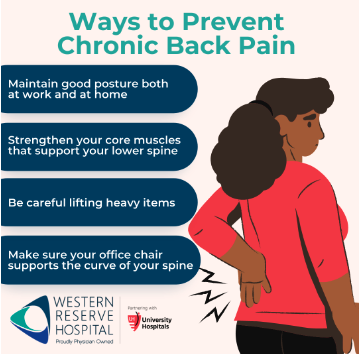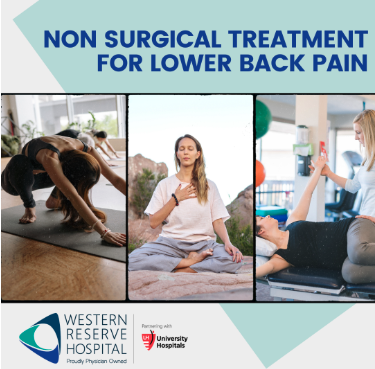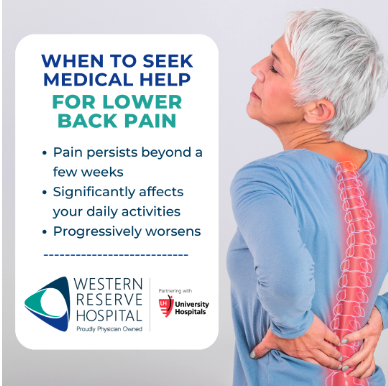Lower back pain is a common ailment that affects many individuals at some point in their lives. Statistics show that approximately four out of five people will experience back pain in their lifetime. This debilitating condition can significantly impact one's daily life and overall well-being. In this comprehensive guide, we will explore the differentiating factors between muscular and spinal causes of back pain, discuss chronic back pain symptoms and their impact, delve into the various causes of lower back pain, highlight preventive measures, and explore treatment options ranging from non-surgical methods to surgical interventions. Let's dive in and gain a deeper understanding of this prevalent condition.
Table of Contents
- Differentiating Muscular and Spinal Causes of Back Pain
- Chronic Back Pain: Symptoms and Impact
- Causes of Lower Back Pain
- Preventing Lower Back Pain
- Alleviating Chronic Lower Back Pain
- Treatment Options for Severe Lower Back Pain
- Non-Surgical Pain Relief Methods
- When Is Surgery Appropriate for Back Pain Relief?
- Recognizing Red Flags: When to Be Concerned
- When to Seek Medical Help for Lower Back Pain
Differentiating Muscular and Spinal Causes of Back Pain
To effectively address back pain, it is crucial to differentiate between muscular and spinal causes. Muscular back pain is commonly localized between the lower part of the ribs and the gluteal fold. On the other hand, if the pain radiates down the leg and is accompanied by tingling or numbness, it suggests the involvement of the nerves (like the sciatic nerve) or even the spinal cord. Seeking professional diagnosis and evaluation is essential to accurately determine the root cause of the pain and establish an appropriate treatment plan.
Chronic Back Pain: Symptoms and Impact
Chronic low-back pain is characterized by persistent pain that lasts for an extended period, typically beyond 12 weeks. Apart from physical discomfort, chronic back pain can have a profound impact on an individual's daily life and mental well-being. The limitations in performing everyday activities, such as sitting, standing, lifting, or even getting in and out of a car, can significantly affect one's quality of life. It is crucial to seek professional help for chronic back pain to manage the symptoms effectively and improve overall functioning.
Causes of Lower Back Pain
Lower back pain can stem from various factors. Musculoskeletal causes, such as muscle strains, sprains, and spasms, are common and often occur due to inadequate muscle support. Maintaining good muscle tone through regular exercise and proper body mechanics can help prevent such issues. Additionally, spinal conditions like herniated discs and degenerative disc disease, and arthritic diseases like ankylosing spondylitis can contribute to lower back pain. Other factors, including poor posture and a sedentary lifestyle, can also exacerbate the problem. Understanding the underlying causes is key to developing a targeted treatment approach.
Preventing Lower Back Pain
Prevention is always better than cure when it comes to lower back pain. Proactive measures can significantly reduce the risk of experiencing this condition. It is important to maintain good posture and ergonomics, both at work and at home. Maintaining a healthy weight and getting regular exercise, especially focusing on strengthening the core muscles, play a vital role in providing adequate support to the spine. Proper lifting techniques and body mechanics should be practiced to minimize strain on the back, especially when engaging in repetitive movements or strenuous activities. Additionally, creating a back-friendly work environment that prioritizes ergonomics can help prevent the onset of lower back pain.

Alleviating Chronic Lower Back Pain
When dealing with chronic lower back pain, a multifaceted approach is often necessary. Lifestyle modifications, such as adopting a healthy diet, managing weight, and reducing stress, can have a positive impact on pain management. Physical therapy and targeted exercises are valuable tools for improving flexibility and muscle strength. Alternative therapies, including acupuncture and spinal manipulation (as with chiropractic care), may provide additional relief. Heat therapy, over-the-counter pain medications, and topical treatments can also help alleviate symptoms. Of course, if a treatment or therapy makes the pain worse, stop immediately and consult your primary healthcare provider.
Treatment Options for Severe Lower Back Pain
In cases of severe lower back pain, it is essential to seek professional clinical assessment and diagnosis. Based on the underlying cause and the severity of the pain, various treatment options may be considered. Prescription medications can provide temporary pain relief, but they should be used judiciously. Interventional treatments such as an epidural injection or sacroiliac injections may be recommended for targeted pain management. In some cases, surgical intervention may be necessary to address underlying medical conditions. The decision to undergo surgery depends on the individual's specific situation, including the level of pain, functional limitations, and the presence of any neurological deficits. Rehabilitation and a structured post-surgery recovery process are crucial for optimal outcomes.
Non-Surgical Pain Relief Methods
Fortunately, many cases of lower back pain can be effectively treated without resorting to surgery. Non-surgical treatments focus on addressing pain, improving function, and promoting overall well-being. Physical therapy plays a significant role in pain relief, as it aims to strengthen the supporting and core muscles and improve flexibility. Targeted exercises tailored to the individual's condition can help alleviate symptoms and prevent future recurrences. Another non-invasive option is transcutaneous electrical nerve stimulation (TENS), which uses low-voltage electrical currents to relieve pain. Massage therapy, relaxation techniques, and mind-body approaches like yoga and meditation can also provide relief by reducing muscle tension and promoting relaxation. Radiofrequency ablation and other interventions are utilized for patients when other treatment options provide no relief and the patient is not a candidate for surgery. 
When Is Surgery Appropriate for Back Pain Relief?
Surgery is considered an option when conservative treatments and injections have failed to provide adequate relief or when the underlying spinal condition necessitates surgical intervention. Conditions such as severe herniated discs, spinal stenosis, or spinal instability may require surgical correction. However, the decision to undergo surgery should be carefully evaluated, weighing the potential risks and benefits. It is essential to consult with a spine specialist who can thoroughly assess the situation and provide personalized recommendations based on the individual's specific needs and circumstances.
Recognizing Red Flags: When to Be Concerned
While most cases of lower back pain are benign and self-limiting, there are instances where back pain may be a sign of a more serious underlying condition. It is crucial to recognize certain red flags that warrant immediate medical attention. These red flags include persistent high-intensity or severe pain, sudden onset of back pain after trauma or an accident, unexplained weight loss, loss of bowel or bladder control, and neurological symptoms like weakness or numbness in the legs. If any of these symptoms are present, it is important to seek medical help promptly to rule out potentially serious causes.
When to Seek Medical Help for Lower Back Pain
Deciding when to seek medical help for lower back pain can sometimes be challenging. As a general guideline, if the pain persists beyond a few weeks, significantly affects daily activities, or progressively worsens, it is advisable to consult a healthcare professional. Self-care measures, such as rest, ice or heat application, and over-the-counter pain medications, may provide temporary relief. However, if the pain persists or if worrisome symptoms are present, a doctor's evaluation is necessary to accurately diagnose the condition and develop an appropriate treatment plan. Specialized care should be sought for cases of chronic or worsening pain to ensure comprehensive management.
Pain Medicine at Western Reserve Hospital — 100% Patient Centered Pain Treatment
You don’t have to suffer from unbearable low back pain. At the Center for Pain Medicine at Western Reserve Hospital we provide the latest innovations in comprehensive pain treatment.
When chronic pain sets in, your life shrinks to fit your pain. Your health, work, and relationships suffer. You become less active. Often, you cannot sleep or suffer from depression. Living with chronic pain is hard, and the anxiety, stress, and anger that accompany it can make the pain even worse. The pain specialists at the Center for Pain Medicine at Western Reserve Hospital can help you conquer your pain with sophisticated new treatments and compassionate, professional care. Contact us at (330) 971-7246 to schedule an appointment and begin the journey to pain relief today.
